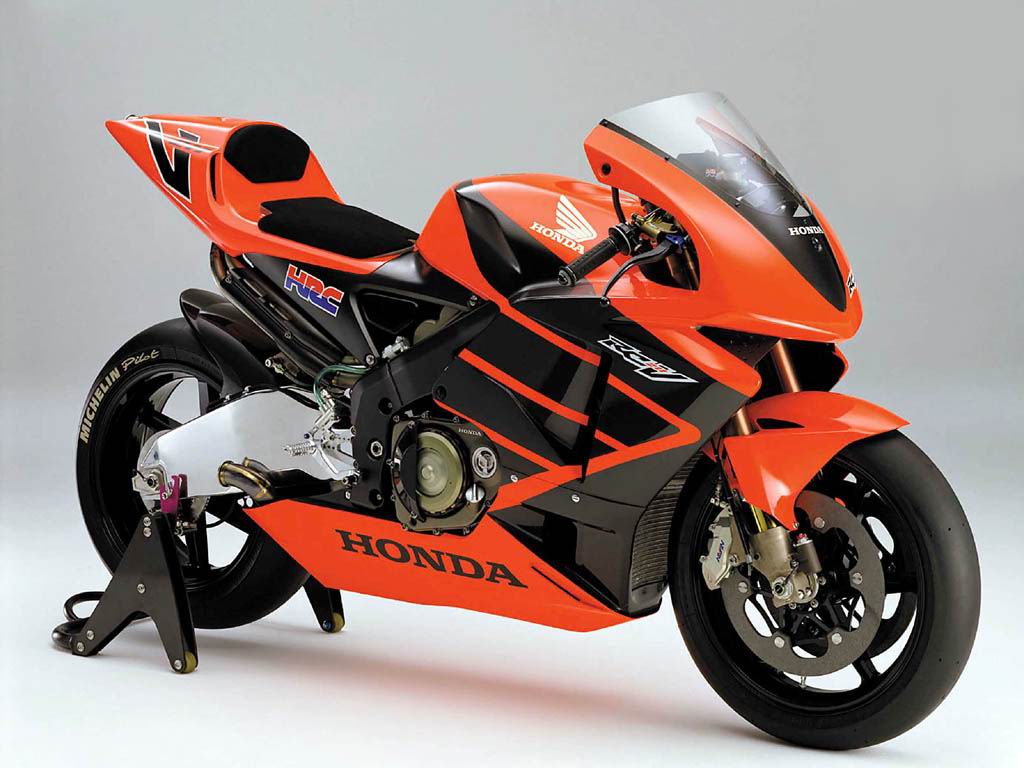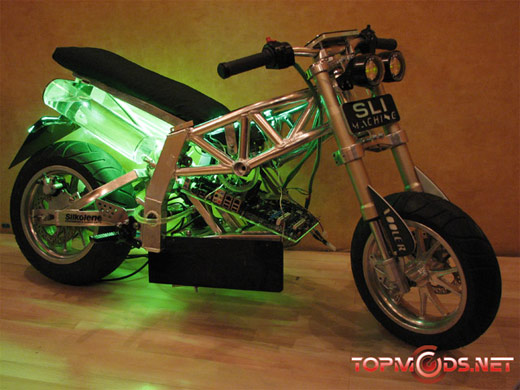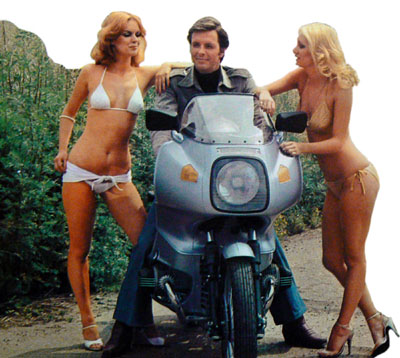 My friend Yves Hayat sent photos from this year's Paris Retromobile show, which is primarily a vintage automobile exhibit, but this year had a small but high-quality motorcycle display. I've always wanted to attend, but luckily Yves shared his camera work... The above photo shows Bernard Salvat, noted collector and author (of 'Sidecars - Cent Ans d'Histoire', etc), with a ca. 1925 Peugeot M 500, which is an OHC racing vertical twin, not well known outside France, but an epic motorcycle. It was developed from their amazing Double-Overhead-Cam vertical twin racer from 1914, which appeared briefly at Brooklands that year for testing, but never reappeared at that venue. This machine deserves a full post, so I'll defer further explanation for now; suffice it to say that the French were way out in front in the early years of motorcycling (and airplanes, and cars), being inventors or early adopters of most of the engine technology we take for granted today.
My friend Yves Hayat sent photos from this year's Paris Retromobile show, which is primarily a vintage automobile exhibit, but this year had a small but high-quality motorcycle display. I've always wanted to attend, but luckily Yves shared his camera work... The above photo shows Bernard Salvat, noted collector and author (of 'Sidecars - Cent Ans d'Histoire', etc), with a ca. 1925 Peugeot M 500, which is an OHC racing vertical twin, not well known outside France, but an epic motorcycle. It was developed from their amazing Double-Overhead-Cam vertical twin racer from 1914, which appeared briefly at Brooklands that year for testing, but never reappeared at that venue. This machine deserves a full post, so I'll defer further explanation for now; suffice it to say that the French were way out in front in the early years of motorcycling (and airplanes, and cars), being inventors or early adopters of most of the engine technology we take for granted today. 
The Peugeot is a groundbreaking machine, with an integral gearbox, and robust shaft-and-bevel cam drive system (the earlier DOHC engine used gear drive). Flat-tank OHC machines are rare as a rule, and an exciting mix of advanced engine design and a very lightweight chassis. The 500M uses an external flywheel (properly light in the center, with weight on the rim), an AMAC carb, Bosch magneto, and is bare-bones to the point of being skeletal. What a motorcycle.

More rarities; a brace of Koehler-Escoffier v-twins; a late-model 'Mandoline' OHV (ca. '25) and an early example (ca. '28) of their OHC v-twin, the 'Monneret' model (see pic above), named in honor of Georges Monneret, the French national champion who continuously developed this model even after the factory stopped production and eventually closed, and could still be seen racing his K-E into the 1950s. I made mention of this machine in an earlier post, and will go through the development history of this model in a later post.

You have to love the twin twin-port exhausts - so stylish - and again it's an OHC machine in a flat-tank chassis, although the cycle parts are more substantial than the Peugeot. A very fast machine, the weak point is a total-loss lubrication system, which means the cams are only fed a drop of oil every few seconds, not the flood they need to keep from premature wear. Many later owners have modified their oiling to pressure-fed dry sump to keep the cams wet, and Monneret did this as well in later years.

The 'Mandoline' 500cc OHV model (above) emerged in 1914, and was very advanced for the day, with an interesting cam arrangement. The detail photo of the engine, below, give the clue - the rockers are turned 90degrees to 'normal', as the pushrods can be seen peeking inside the 'v' of the cylinders. The cam is driven within the crankcase, above the flywheels; a good spot for lubrication actually, and for keeping the pushrods short and stiff, like a Vincent or Velocette - a 'high-cam' pushrod motor.

Koehler-Escoffier is a very obscure make to many, but these two machines, plus their 500cc OHC single-cylinder 'Grand Prix' model, should be better known, as they are really top-tier machines.

Another vertical twin produced well before Edward Turner made them famous was the Blériot
(above), with a unit-construction 500cc sidevalve motor, from around 1923. Blériot is a name well-known to airplane enthusiasts, as Louis Blériot was a real aviation pioneer, and became the first person to fly across the English channel in 1909. Later his aircraft company produced the famous
S.P.A.D. fighter aircraft in WW1. His motorcycles were beautifully engineered, if short-lived.

I love the French Racing Blue color scheme, and the disc wheels - so Art Deco. Note also the small muffler at the front of the crankcase, and the delicate fishtail emerging from behind the rider's footrest.

In the Pioneer category, this Werner (above) can be thanked for settling the issue of 'where does the engine go'; it was this machine which became the model for just about all subsequent motorcycle layouts to this day - previously motor-bicycle engines could be found over the front or rear wheel, on under the seat, high up near the steering head, etc, but the Werner handled so much better than all other early experiments that the light switched on, and this layout became the standard.

Another early machine on display was this ca.1906 Indian 'Camelback' ioe v-twin (above), with an atmospheric inlet valve. It nicely illustrates my point about the Werner - the 'where' argument hadn't been settled yet. In those early days Indians were blue as well as red.

Somebody brought along their RS54 BMW 'Rennsport' OHC racer - always a crowd-pleaser - and don't we wish BMW had produced such a machine for sale to the public. A totally different animal to the rather staid image projected by their roadsters of the period.

And of course, there were some outrageous cars on show and on sale at the hall. This Mercedes-Benz W165 GP racer wasn't for sale, but is the last of the factory racers from the 1930's, of the type driven by Caracciola to win the Tripoli GP in '39.

Here's the cockpit - hop in!

This Jaguar XK120C was for sale at Gregor Fisken's acre of blue carpet - Fisken always offers the most interesting racing cars - I would presume this is an aluminum-bodied early racing model, ca.'5o, complete with 'Brooklands' windscreens and leather bonnet strap.

And if you can't afford the real thing, there's always the desktop model Bugatti...

...as the 'Real Thing' was on offer at the Bonhams auction; the two-owner 'Barn Find' 1937 Bugatti Atlante Coupé Type 57S, which sold 3.4million euros! There's a great story about the Bug here.
Many thanks to Yves for the photos!









No comments:
Post a Comment